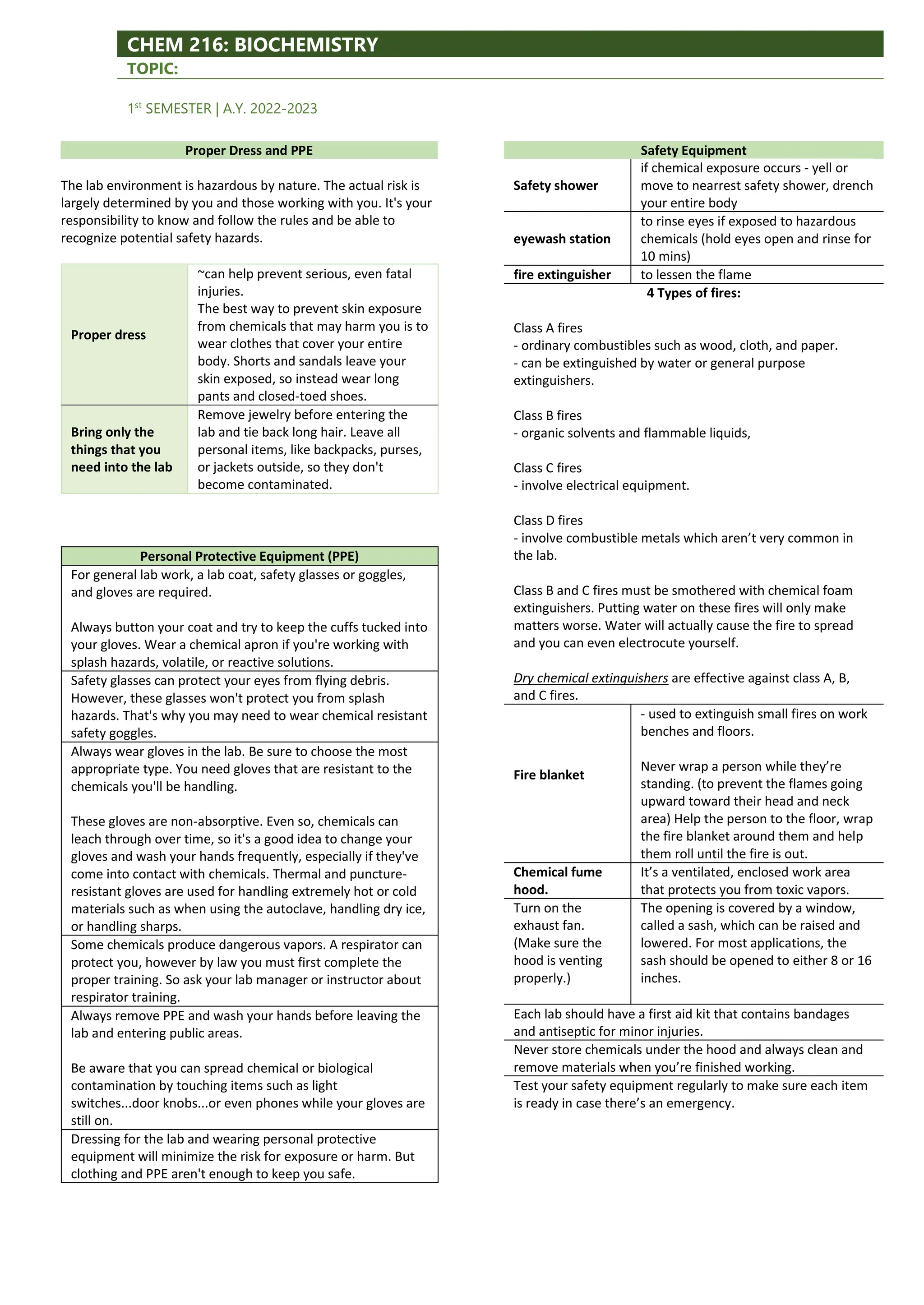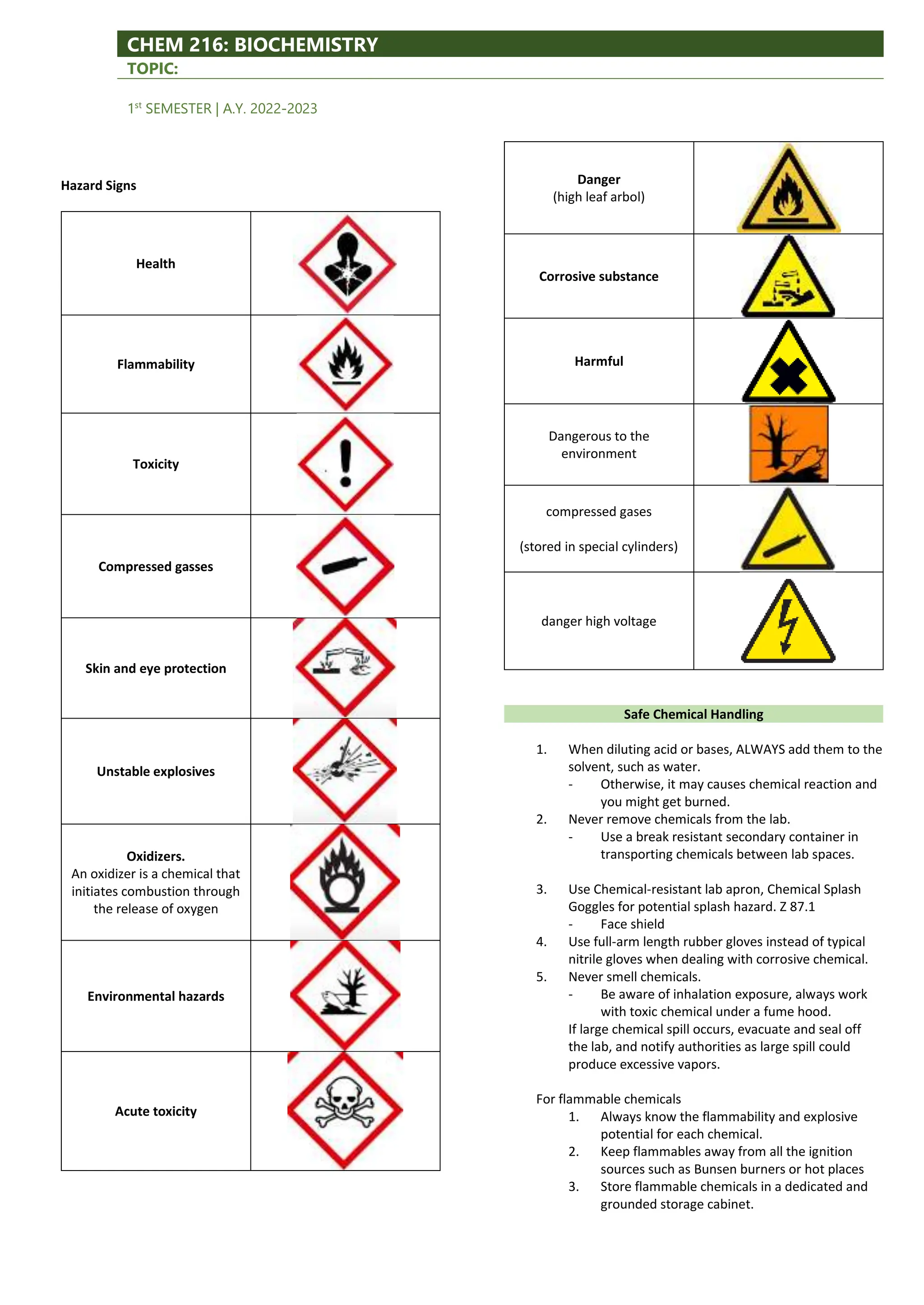The document outlines safety protocols for a biochemistry lab, emphasizing the importance of proper dress and personal protective equipment (PPE) to minimize exposure to hazardous materials. It details specific safety equipment, emergency procedures, and behavior guidelines to ensure a safe laboratory environment. Additionally, it highlights the necessity of understanding chemical hazards through safety data sheets and labels, as well as safe handling and disposal practices.



